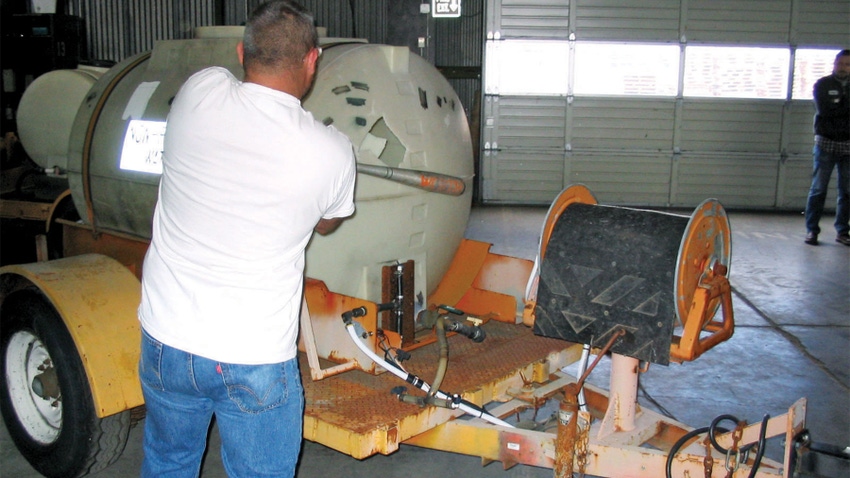February 27, 2024

It can be easy to push inspections to the side once planting season hits, but it can pay off to take a few minutes now to inspect poly storage tanks before filling them. A few easy measures can prevent those dreaded spills and headaches later in the season.
Fred Whitford, director of Purdue Pesticide Programs, explains that getting people to perform these simple inspections isn’t always easy.
“Getting people to inspect tanks is pretty difficult,” Whitford says. “At that time of the year, they’re really busy, and they want to get things done.”
Matter of minutes
Checking poly storage and transport tanks is a simple two-step process that can be completed in mere minutes. The first step consists of using a water-soluble pen, or any marker that is not permanent, to check for cracks in the tank caused by sunlight.
Whitford explains that you mark a small section with the pen and wipe it away with a shop rag. If there are any cracks, the pen will have filled them in, and they’ll be visible after wiping away most of the ink.
“If it’s bad, it’ll look like a checkerboard, dry rot or alligator skin,” Whitford adds. “It’s just a visual thing you can easily see that’s telling you that the tank is starting to degrade from the sunlight.”
If you find yourself in that situation, the next step is to take a baseball bat to the tank. Strike the empty tank with a bat where you find the cracks to see if it shatters.
On round-bottom storage tanks, the best spot to test is at knee height and around the unload area. As for hot-dog style transport tanks, the best spot is on the ends.
If a tank cracks during the bat test, then it was a disaster waiting to happen and is of no use to you. However, if a tank shows signs of degradation but doesn’t crack during the bat test, Whitford recommends replacing it to prevent later issues.
“That’s ultimately up to that grower to decide if it needs to be replaced or not,” Whitford says. “What I’d like to see them do is take that tank and make it a water tank instead of using it for chemicals.”
Making the most of your tank
Most tank issues start at the time of purchase. Whitford explains that, all too often, folks are buying tanks that aren’t the right density or shape for their intended use.
“Many people buy tanks based on price alone,” Whitford adds. “They don’t look at density. They put a heavy material like fertilizer in a tank that’s meant to hold the weight of water, so they’re stressing the tank.”
Poly storage tanks come in densities of 1.0, 1.5 and 1.9. Each of these equates to the weight of water multiplied by the density of the tank; a density of 1.0 holds one times the weight of water, while a density of 1.5 holds one and a half times the weight of water. Whitford says to buy the correct density based on what materials you’re storing or transporting.
An additional measure is to select the correct tank shape. Round-bottom tanks are intended for stationary storage, while hot-dog style tanks are intended for transport.
One more recommendation to prolong tank life is to keep tanks under roof when they are not in use.
Visit the Purdue Pesticide Program website for more information.
About the Author(s)
You May Also Like






